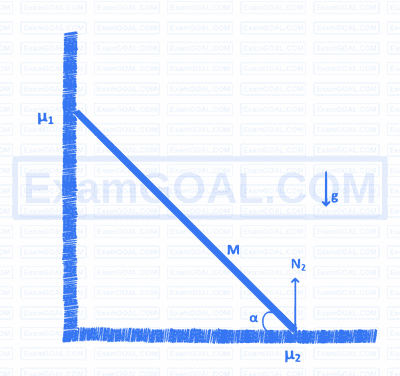Mechanics
Units & Measurement and Dimensions
MCQ (Single Correct Answer)Motion in a Straight Line
MCQ (Single Correct Answer)Laws of Motion
MCQ (Single Correct Answer)Circular Motion
MCQ (Single Correct Answer)Work, Energy and Power
MCQ (Single Correct Answer)Rotational Motion
MCQ (Single Correct Answer)Gravitation
MCQ (Single Correct Answer)Simple Harmonic Motion
MCQ (Single Correct Answer)Fluid Mechanics
MCQ (Single Correct Answer)Heat and Thermodynamics
MCQ (Single Correct Answer)Optics
Ray Optics
MCQ (Single Correct Answer)Electromagnetism
Electrostatics
MCQ (Single Correct Answer)Current Electricity
MCQ (Single Correct Answer)Capacitor
MCQ (Single Correct Answer)Moving Charges and Magnetism
MCQ (Single Correct Answer)Electromagnetic Induction
MCQ (Single Correct Answer)Alternating Current
MCQ (Single Correct Answer)Electromagnetic Waves
MCQ (Single Correct Answer)Modern Physics
Atoms and Nuclei
MCQ (Single Correct Answer)Dual Nature of Radiation
MCQ (Single Correct Answer)Semiconductor Devices and Logic Gates
MCQ (Single Correct Answer)1
IAT (IISER) 2024
MCQ (Single Correct Answer)
+4
-1
An inextensible cord of negligible mass passes over the rim of a solid disc of mass $M$ and radius $R$. The disc is free to rotate about an axis passing through the centre perpendicular to the plane of the screen, as shown in the figure. Two blocks of masses $M$ and $\widetilde{M} / 2$ are attached to the two free ends of the cord. Assume that there is no slipping of the cord on the disc. The acceleration due to gravity is $g$. What is the value of the angular acceleration of the disc?


2
IAT (IISER) 2020
MCQ (Single Correct Answer)
+4
-1
Consider a solid rod of mass $m$ and uniform density resting against a vertical wall and horizontal floor as shown in the figure. The coefficients of friction of the rod with the wall and with the floor are given to be $\mu_1$ and $\mu_2$ respectively. Gravity is acting downwards with acceleration due to gravity $g$. What should be the value of the inclination angle $\alpha$ so that the rod stays in equilibrium?


Questions Asked from MCQ (Single Correct Answer)
IAT (IISER) Subjects
Physics
Mechanics
Optics
Electromagnetism
Chemistry
Physical Chemistry
Inorganic Chemistry
Mathematics
Algebra
Trigonometry
Calculus
Coordinate Geometry
Biology
Botany
Cell - The Unit of LifeBiomoleculesCell Cycle and Cell DivisionSexual Reproduction in Flowering PlantsMicrobes in Human WelfareAnatomy of Flowering PlantsMineral NutritionRespiration in PlantsBiotechnology: Principles and ProcessesBiodiversity and ConservationMorphology of Flowering PlantsPhotosynthesis in Higher PlantsPrinciples of Inheritance and VariationMolecular Basis of InheritanceOrganisms and PopulationsEcosystem
Zoology
Human Health and DiseasesBody Fluids and Its CirculationLocomotion and MovementNeural Control and CoordinationReproduction in OrganismsStructural Organisation in AnimalsDigestion and AbsorptionExcretory Products and Their EliminationChemical Coordination and IntegrationHuman ReproductionAnimal KingdomBreathing and Exchange of Gases